Giving Porgy Back: HGO’s Legendary 1976 Production of the Gershwins’ Classic
Join us at the Wortham this fall for the Gershwins' Porgy and Bess! The opera will run in nine performances, from October 24, 2025 to November 15, 2025. Single tickets to all shows are on sale NOW! Click here to secure your seats!
1976 was approaching, and producer Sherwin Goldman was looking to celebrate the United States bicentennial by mounting a quintessentially American opera: the Gershwins’ Porgy and Bess. He approached the Metropolitan Opera, but the company turned him down. They had a (mostly white) chorus under contract and couldn’t hire the additional African-American singers needed to portray the inhabitants of Catfish Row—a fictional Gullah community in South Carolina.
So Goldman proposed the project to Houston Grand Opera. David Gockley, recently appointed as general director, had quickly established himself as a champion of new and innovative programming. In fact, HGO had already staged an all-Black opera under his leadership in 1975—Scott Joplin’s Treemonisha. Gockley agreed, and preparations for Porgy began.
When he heard the news, John DeMain marched into Gockley’s office, insisting he was the best man to conduct the production. DeMain would eventually become HGO’s music director, but at the time, he was only a year into his position as head of the company’s now-defunct touring arm, Texas Opera Theater. Impressed by DeMain’s chutzpah, Gockley hired him. He also took DeMain’s recommendation that they bring on director Jack O’Brien, an up-and-coming talent who would go on to a successful Broadway career.
But in 1976, less than a decade after the civil rights movement, DeMain and O’Brien found themselves in a rather strange position. “Here were two young white guys in charge,” recalls DeMain. “We went out to dinner, and I said to Jack, ‘What would you do?’ And he said, ‘Give it back to the people it was created for.’”
***
Forty years after its premiere in 1935, Porgy and Bess had strayed from the work that George Gershwin and his collaborators envisioned. O’Brien and DeMain explain that the blame lay largely with a director named Ella Gerber, who had been involved with touring productions of Porgy since the 1950s. For years, Gerber had held exclusive rights to stage the opera. Ironically, DeMain had met Gerber as a boy in Youngstown, Ohio. “One day, you’ll grow up and do this piece,” she told him.
Gerber’s version contained numerous alterations that undermined the drama. “She cut it severely and reassigned songs,” says DeMain. “The big production numbers were too Hollywood—too Broadway. Ella was distorting, really, the essence of the piece.” At times, the staging even strayed into minstrel-show territory. “She had the chorus in white gloves on Kittiwah Island,” says O’Brien. “She had contempt for Black singers. She treated them disrespectfully. She never said a kind word to any of them.”
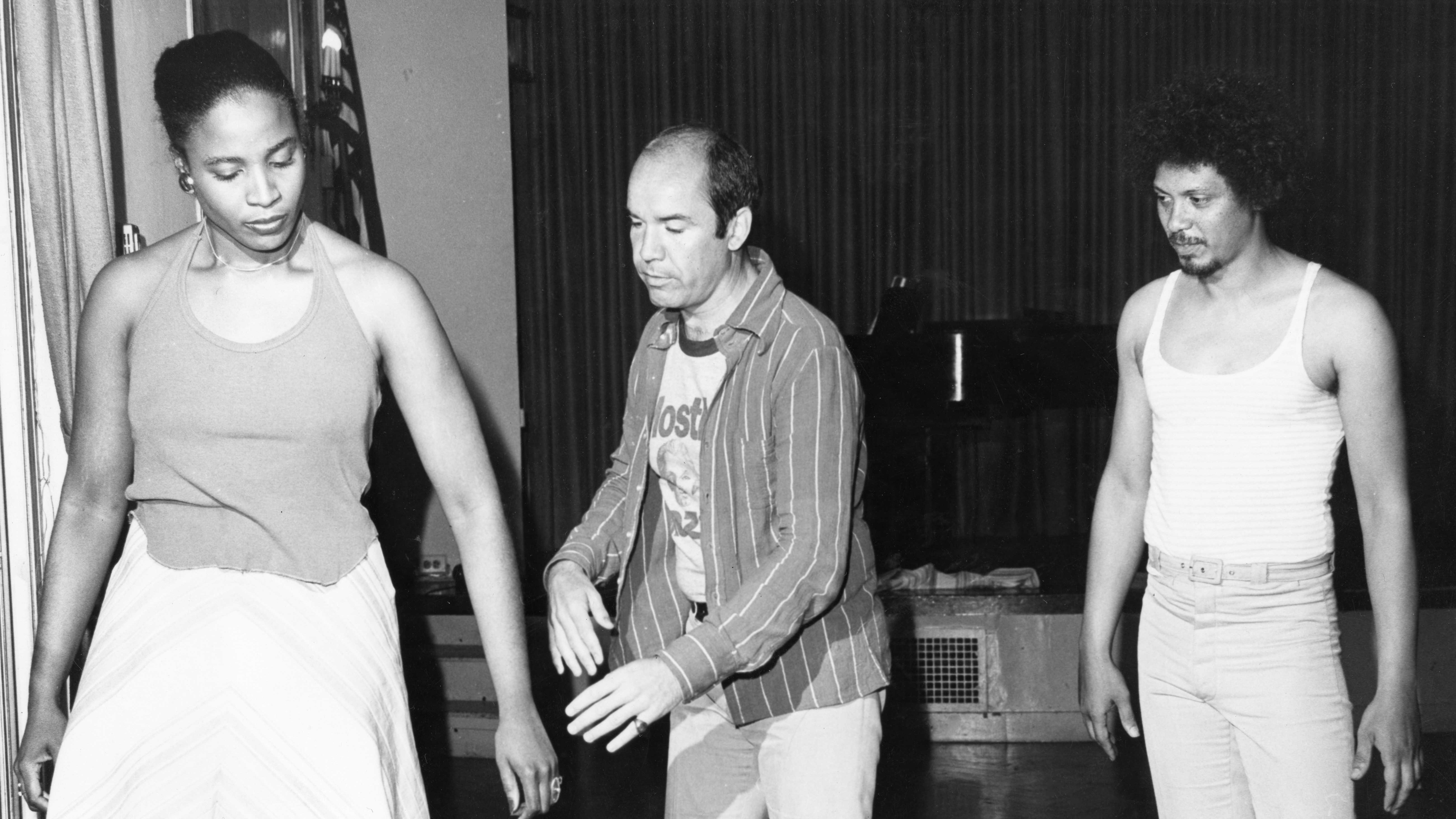
When O’Brien and DeMain traveled to New York to audition some 500 Black singers, they encountered a bass who had previously worked under Gerber. “He came up to the desk,” remembers DeMain, “and he said, ‘Is that woman directing?’ And we said, ‘No, we have a new director.’ And he said, ‘All right, I’ll sing.’ That’s the kind of animosity there was towards the piece from within.”
The goal of HGO’s Porgy, then, was a twofold restoration: to return the work to its operatic origins and—more importantly—to give the work back to the culture that had inspired it. To be sure, the groundwork for the first goal had already been laid. In 1975, Lorin Maazel conducted the Cleveland Orchestra on the world-premiere recording of the whole opera.
But HGO’s production would be the first major staged production of the complete score. Or, more accurately, the nearly complete score. For the HGO recording of Porgy, DeMain conducted every note Gershwin composed. But in live performance, cuts had to be made to fit the work into just under three hours, which is still standard practice today.
As for the second goal of how to reclaim Porgy for African-Americans—that was far less clear for the squarely Caucasian conductor and director. “When I walked in on the first day of music rehearsals and faced that all-Black chorus, there was not a smile on anybody’s face,” says DeMain. “All I could feel was, ‘Okay, show us what you’re going to do.’”
O’Brien’s solution was to acknowledge his ignorance to the cast. “I was open and honest and said, ‘I do not understand this community. I’m not part of it. Help me, tell me what to do.’ And they did.”
The director’s first move was to incorporate the chorus members as co-creators. “I said, ‘I’m going to give you 20 minutes to get married. You can go around and decide yourselves, who’s married to whom? Do you have families? Are you widowed? Are you alone? Because then I’ll put you in the community the way you’re most comfortable.’”
O’Brien understood that the prominent role of the chorus in Porgy reflected the importance of community in Black life. “In the show, they were up in their apartments, on their porches. They were watching everything that happened onstage, because it was their story as well.”
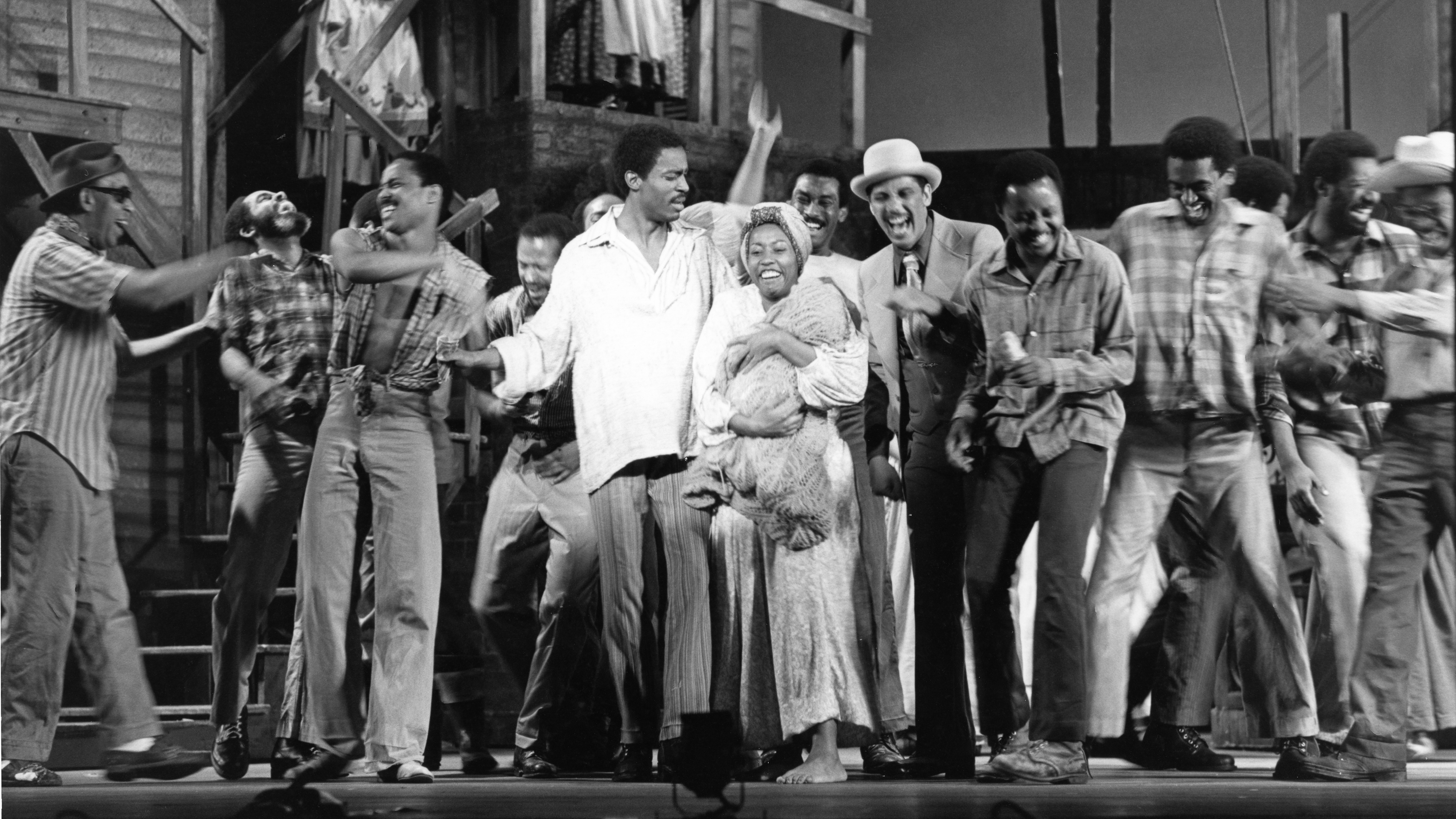
African-American artists were also brought in as consultants or members of the creative team. Notably, choral-leader Eva Jessye, who served as Gershwin’s music director for the original 1935 production, attended the first HGO preview. At a pre-show dinner, she offered invaluable insight into Southern culture. “I sat at her feet, and she dropped wisdom into my lap,” O’Brien remembers.
“For the first time, maybe in 30 years,” he adds, “Black artists’ information, knowledge, and experience were being worked into the show.”
***
Donnie Ray Albert was just 26 years old when David Gockley called to offer him the part of Porgy. The baritone was fresh out of grad school and only had a handful of professional credits under his belt, including a small role in HGO’s Treemonisha. Unfamiliar with the score and daunted by the magnitude of such an undertaking, Albert turned Gockley down. It took a “verbal pounding” from a mentor to finally convince him.
To prepare, Albert was sent off to New York for an intense week of one-on-one coaching with William Warfield, who had toured as Porgy opposite Leontyne Price in the 1950s. “By the end of that week, I had memorized the role,” says Albert. “I sang it cover to cover, and Uncle Bill listened at a distance. At the end of it, I noticed that he was weeping. And he said, ‘I think you’re ready to do this.’”
Albert also received advice from Todd Duncan, who premiered the role of Porgy. “I remember very distinctly, he said, ‘Son, you cover this stage like a marathon runner. But once that gal comes out here in that red dress, nobody pays attention to you!’ He said, ‘You’re going to have to slow down. You are going to wear yourself out.’”
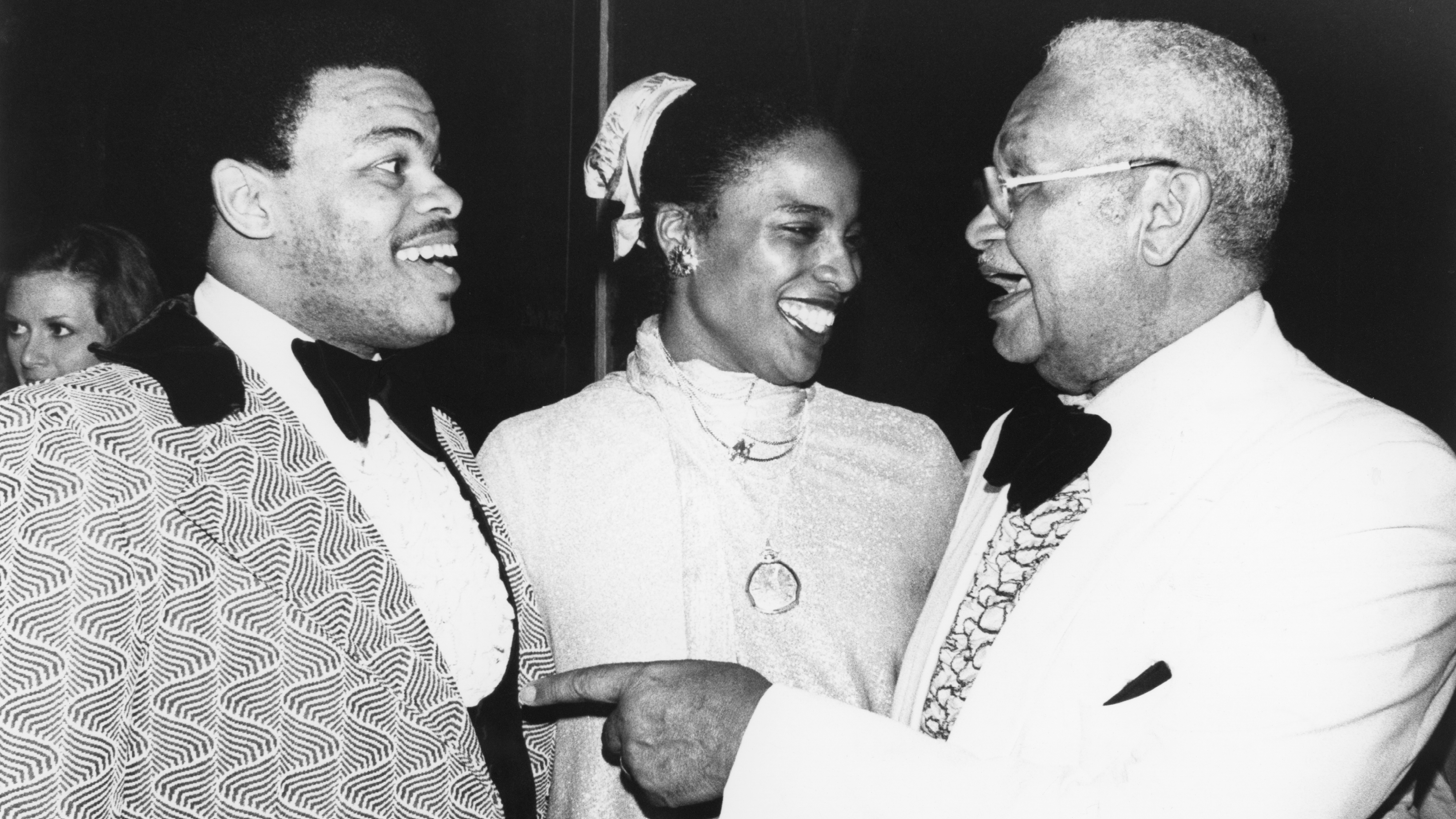
It’s a wonder how Albert mustered the energy. While contemporary Porgys tend to get about on a crutch, Albert played the disabled beggar on his knees for the entire duration of the show. “I was usually thoroughly drained at the end,” he admits. “If I had to do that at 75 years old right now, I’d say, ‘We’re going to use a Volkswagen, and he’s going to be rolled out.’”
Albert’s greatest teacher was a real-life Porgy that he encountered while driving to rehearsal. “I pulled up to a 7-Eleven, and sitting right out in front was a crippled beggar—a well-built African-American man. I sat in my car and just watched him. His physical movements helped me with imagining how I would be on my knees for three hours.”
It was important to director Jack O’Brien that the character be portrayed with dignity—“that this ‘broken’ man was not broken.” The most iconic moment of his staging came during the love duet “Bess, You Is My Woman Now.” The soprano playing Bess, Clamma Dale, was a six-foot-tall woman that O’Brien calls “the most beautiful thing you’ve ever laid eyes on in your life. I said to Clamma, ‘I want you to drop to your knees, and I want you to crawl to him. But I don’t want you to see him lower. When you kneel down, see him rising up.’
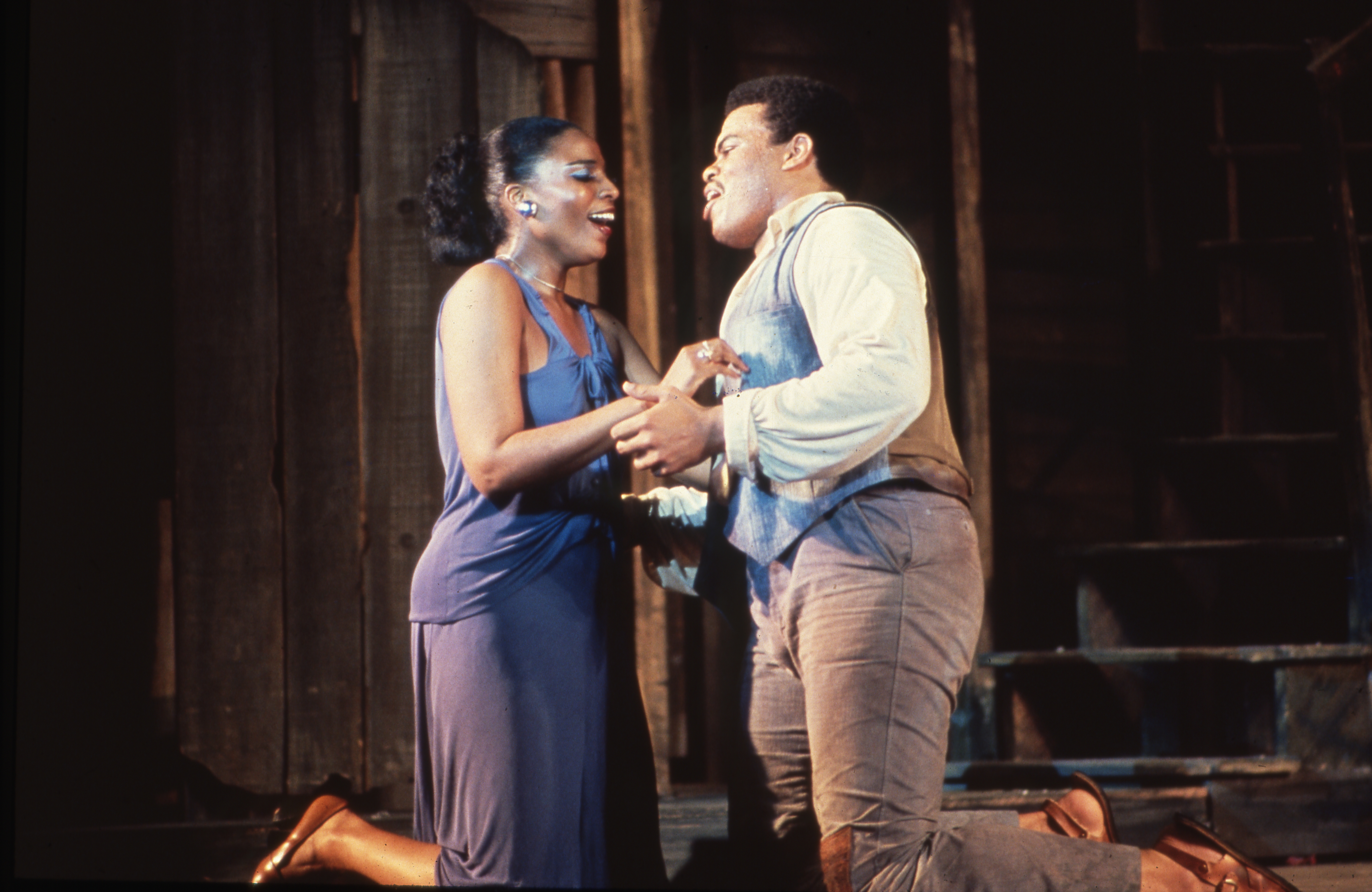
“The least-qualified member of the community was redeemed by his love,” O’Brien continues, “and he obtained superpowers of sort.” Indeed, in the production, Porgy works his disability to his advantage by executing an aerial sneak-attack on Bess’s abusive ex-boyfriend. “I decided that he could claw his way up on the roof of the shed he lived in,” says O’Brien. “So when Crown came looking for him, he would never think to look up to see a crippled person.”
After his breakout role, Donnie Ray Albert portrayed Porgy "well over 450 times on my knees and hundreds of times in concerts,” most recently in 2007 in Austria. At the same time, he was careful to expand his repertoire. He was worried about being typecast solely as Porgy for the rest of his career, which was a danger in those days for Black basses and baritones. Albert discovered first-hand how common it was for African-American singers to be pigeonholed when he was seeking management after the HGO production. “One or two of them told me, ‘Well, we already have a Black artist on our roster, so we don’t need another one.’”
Albert now serves as a Senior Lecturer in Voice at UT Austin’s Butler School of Music. He continues to give recitals and has become an enthusiastic performer of Black composers. But even if Porgy wasn’t written by a Black songwriter, “the color of the composer doesn’t matter.” For Albert, Gershwin captured the sense of hope and perseverance at the heart of the African-American experience—especially in Porgy’s curtain-closer, “O Lawd, I’m on My Way.”
DeMain discovered that this number, in which Porgy sets off on the impossible task of finding his lost Bess, had been sped up over the years and treated like a Broadway grand finale. But the conductor learned from choristers who had sung under Eva Jessye that she originally took it at a broader, mid-range tempo that lent it the quality of a prayer. “It’s a spiritual and a gospel number at the same time,” says Albert. “Gershwin intended for Porgy to have that drive that says, ‘I am not a defeated man. I will go on in spite of my condition, in spite of my circumstances. I’m going on.’”
***
Following the 1976 HGO run of Porgy, the production moved to Broadway, where it played eight times a week with three rotating casts. During the day, Albert, Dale, and their colleagues in the main cast recorded the score with DeMain at RCA Studios in New York. It was awarded the Grammy for Best Opera Recording the year after Maazel’s Porgy won the same award. At the Tonys, the production earned six nominations, including nods for both Dale and O’Brien. It won Most Innovative Production of a Revival.
After closing on Broadway, the show toured throughout the U.S. and Europe. Albert joined for most of it, dropping out after the Italian cities near the end of the tour. There in the birthplace of opera, he noticed that there was none of the hairsplitting opera-vs.-musical debate over Porgy that obsessed Americans. “The Italian critics said that Gershwin wrote something that compared to anything lyrical that Puccini could have written, as well as the drama of Wagnerian opera.”
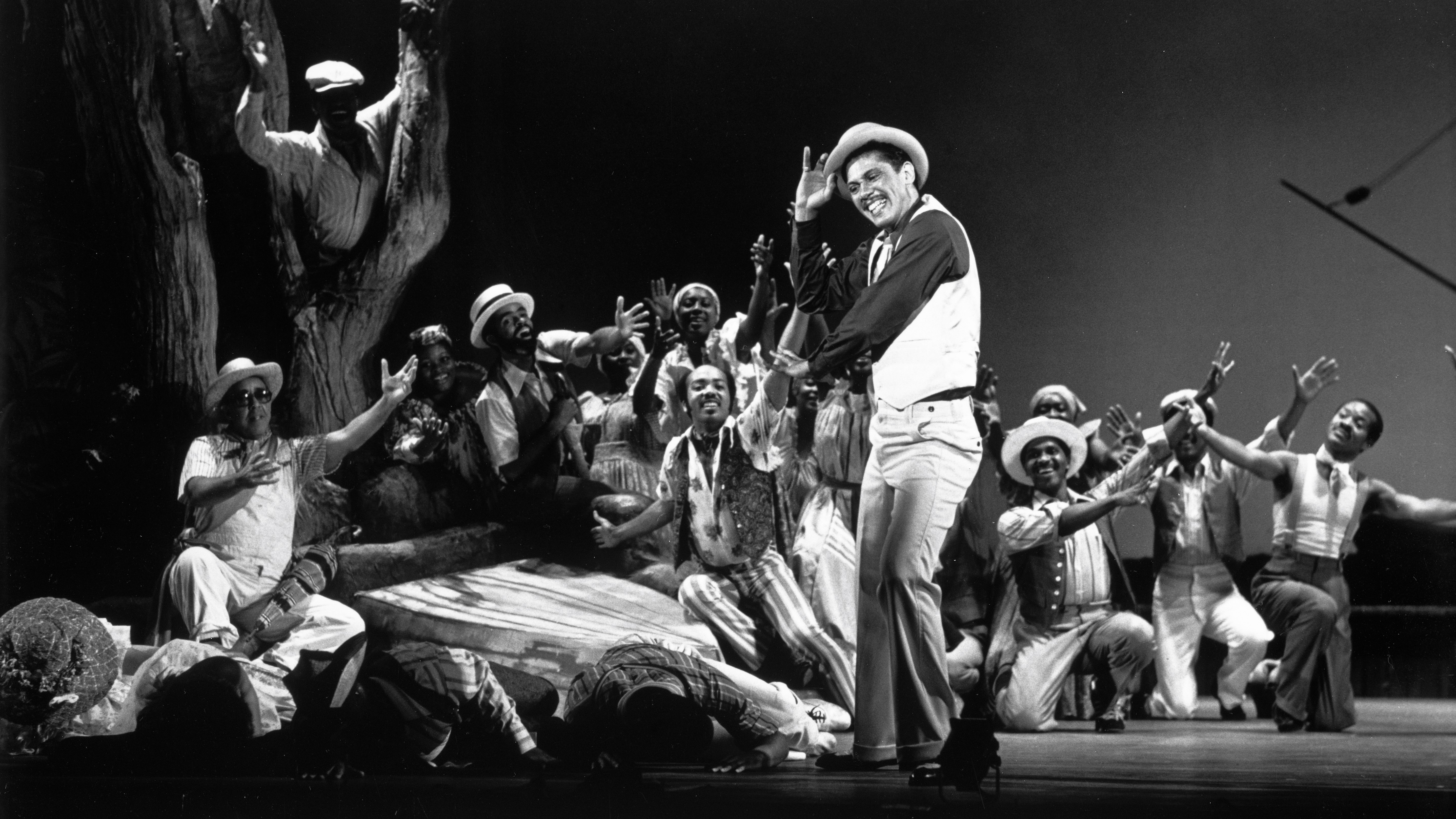
Up until Porgy, HGO was still a regional opera house. “It wasn’t on everybody’s circuit,” says DeMain. “When the critics went to see something, they’d go to Chicago, they’d go to San Francisco. But after Porgy, suddenly people started making Houston a destination.”
With a new global reputation, the company began to attract a higher caliber of singers. DeMain remembers a post-Porgy production of Tosca in 1984 starring Éva Marton and Plácido Domingo. “At the end of the first act, the audience gave a standing ovation. I think what they were saying was, ‘This is what we want. Thank you.’ The company was raising itself to a new level.”
HGO revived O’Brien’s Porgy a decade later, in 1987, with DeMain conducting and Albert reprising his role. In 1995, the company mounted a new staging that subsequently toured to Japan, La Scala, and the Paris Opera. But then something odd happened. Porgy and Bess—the opera that had put HGO on the international map—completely disappeared from the company’s repertoire.
After a 30-year absence, the Gershwins’ classic is finally returning to the Wortham. Next fall, HGO will stage a production by Francesca Zambello, director of last season’s Sound of Music and this season’s West Side Story and Tannhäuser. Zambello’s dynamic interpretation—which has been a hit across the U.S.—updates the story slightly, to the 1950s. The monumental sets by her usual designer, Peter J. Davison, re-envision Catfish Row as a decaying industrial space. The Kittiwah Island scene unfolds against the post-apocalyptic backdrop of an abandoned amusement park.
In the title roles will be bass-baritone Michael Sumuel and soprano Angel Blue, who last sang at HGO in 2022 as Violetta in La traviata. DeMain first heard Blue sing “Summertime” in the smaller role of Clara when he conducted the 2009 San Francisco Opera performance of Zambello’s Porgy. “That’s going to be a Bess one day,” he thought. “Because that voice had such amplitude to it and such richness to it.” Nine years later, DeMain conducted Blue in her first run as Bess at Seattle Opera. Since then, her name has become synonymous with the role.
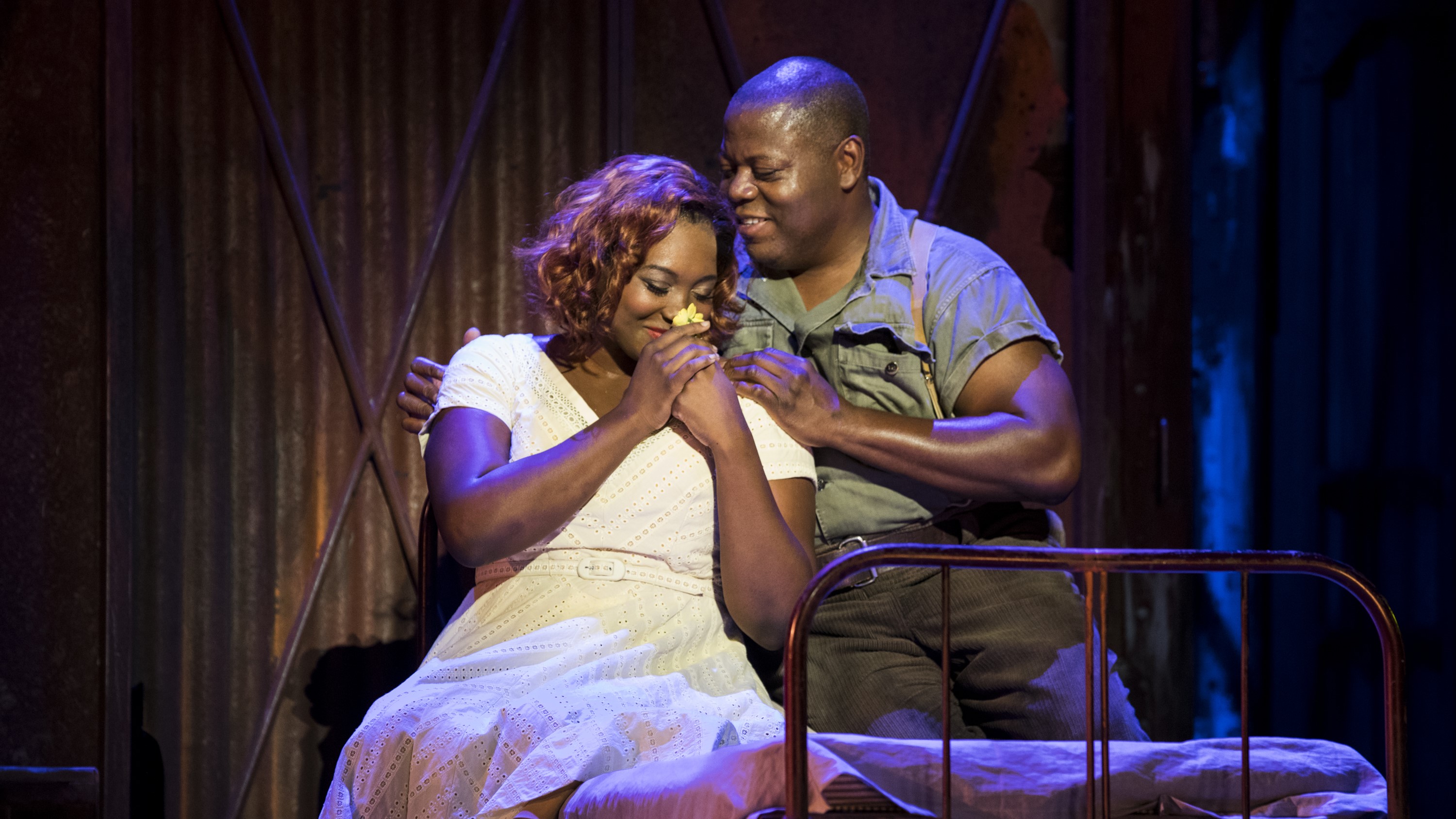
Albert will return in the cameo role of Lawyer Frazier—a shyster who sells a divorce to the unmarried Bess. (“He’s the spam of the culture,” says Albert.) His appearance helps to bridge HGO’s storied history with Porgy and Bess. Nearly 50 years after that 1976 production—and 90 years after its world premiere—it remains the quintessential American opera that producer Sherwin Goldman rightfully believed it to be. Thanks to the nurturing efforts of HGO artists like Albert, DeMain, and O’Brien, the work has been restored to its former operatic glory and re-entrusted to the Black population it portrays.
“Gershwin wrote this piece to celebrate his source of musical inspiration, which was from the African-American community,” says DeMain. “The HGO production paved the way for opera companies all over the world to produce it on their own—and to capture the essence of that community: the way they thought, the way they made love, the way they sang, the way they prayed.”